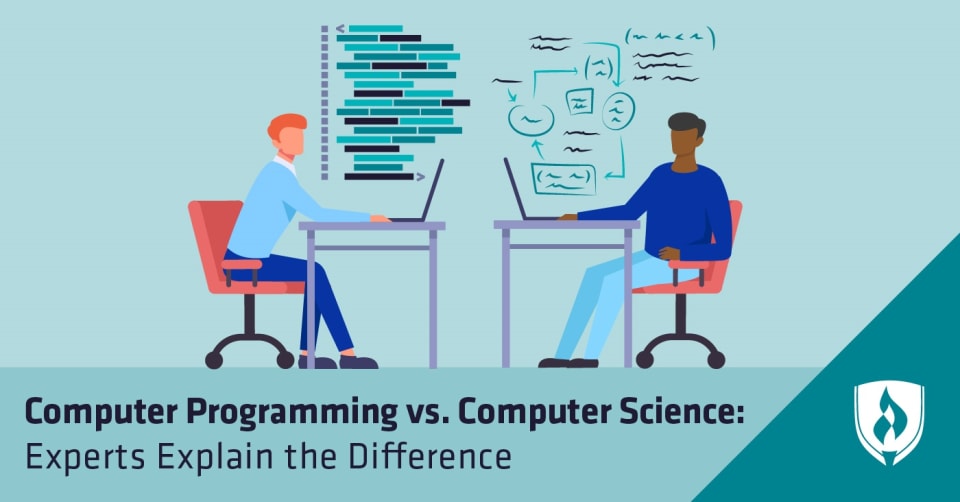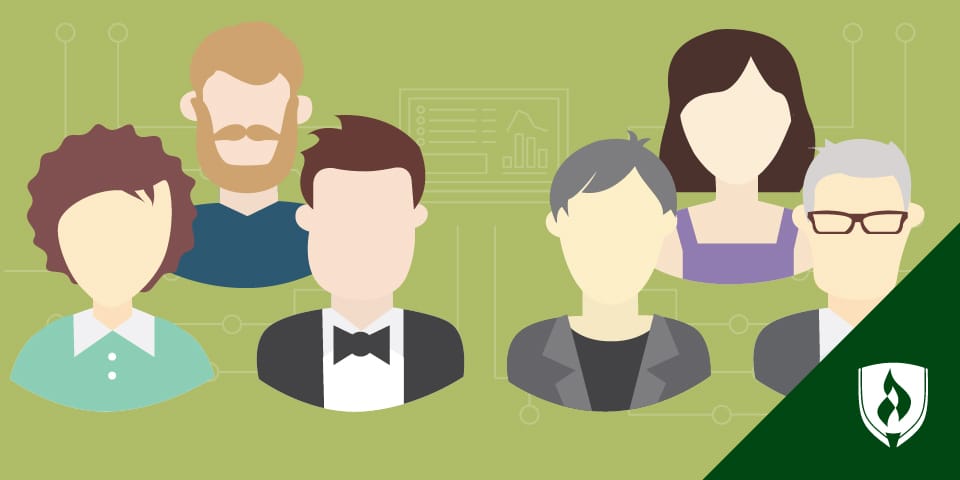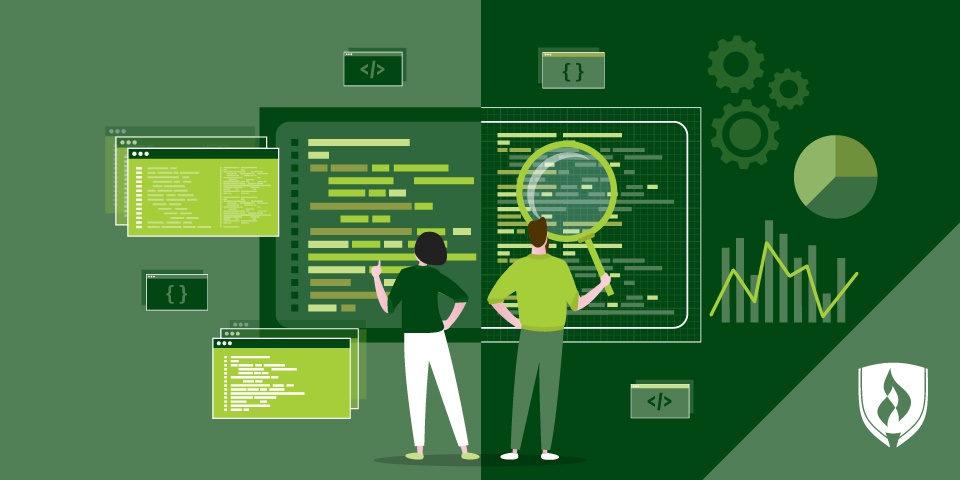Computer Programming vs. Computer Science: Experts Explain the Difference
By Ashley Brooks on 10/19/2020

When debating your options for earning a living, pursuing a career in technology certainly sounds appealing. For one, the Bureau of Labor Statistics notes that employment in computer and information technology occupations is projected to grow at a rate much faster than the national average.1
While these statistics satisfy some of the basic criteria you have for choosing a career path, you still have a lot of research to do and questions to resolve. For instance, figuring out the difference between computer programming and computer science—and whether or not those distinctions will actually matter in your day to day work.
We’ve asked tech pros to help weigh in so you can have a clearer understanding of computer science versus computer programming. This includes comparing similarities, differences, and exploring how these two closely related subjects intertwine. Ready to get started? Let’s dive in.
Computer programming vs. computer science: What’s the difference?
In a nutshell, computer science deals with the theory of computer processes, while computer programming is the practical application that brings those ideas to life. Here’s another way to think of it: computer scientists find and analyze problems to brainstorm the solutions that take shape in computer programming.
Computer science includes studying cutting-edge technology like artificial intelligence and computer-human interactions, as well as database systems and software engineering, according to Sreejith Omanakuttan, open source team leader at Fingent. “Computer programming, on the other hand, focuses on designing, creating, writing and testing code for software applications and operating systems,” Omanakuttan says.
Computer programming vs. computer science: What are the similarities?
Although these two focus areas have their differences, they also intersect. Programmers and computer scientists work together, supporting each other in the development of new technology.
“Looking at how a system may work from a high level, computer scientists gather requirements and document their findings, investigating new concepts or ideas that could help improve a system,” says Kieran Wilkinson, software engineer at Koder.ly. “A computer programmer will review the documentation provided by the computer scientist and create the system in line with the requirements and suggestions.”
Each of these tech careers also offers the opportunity to specialize. For example, programmers often specialize in particular coding languages or application frameworks. Computer scientists can focus on the area of technology that holds the most interest for them, like data science, AI or software engineering.
Computer programming vs. computer science: Job duties
Now you can see how these tech roles function, both together and separately. But what would you actually do all day in a career as a computer programmer vs computer scientist?
Many computer science job duties are based in theory and research. “A computer scientist will investigate the performance of a particular system, carrying out research such as new modelling or investigations,” Wilkinson says. He adds that they may also be responsible for working out mathematical equations relevant to their field, such as considering statistical modelling.
Most of a computer programmer’s job duties involve, well, programming. Wilkinson shares that most computer programmers spend their days writing code, either building off of an existing system or creating something brand new. “Part of their role may also involve testing code written by other computer programmers ahead of releasing the software to clients, ensuring that the functionality will run as expected.”
Computer programming vs. computer science: Job titles
Here’s where things can start to get a little confusing. While we’re using both terms as shorthand, you won’t typically find a lot of job postings that are seeking specifically a “computer programmer” or “computer scientist”—there are several job titles that fall under the umbrella of each and, depending on the specifics of the role, can overlap.
If you are most interested in the applied, hands-on work found under the computer programming umbrella the following roles are a close fit:
- Software developer
- Web developer
- Quality assurance (QA) analyst
- Mobile application developer
For those more interest in the larger scale theoretical planning and design of computer science, these roles are a close fit:
- Software engineer
- Hardware engineer
- Systems analyst
- Software architect
That said, it’s fairly common for tech professionals to move from one “umbrella” to another—for instance, software developers become software engineers and vice-versa. If this all seems a little messy or hard to sort out, don’t get discouraged. Job titles and the duties that go with them are not set in stone and can vary from employer to employer—so it can help to focus on the duties of a job posting if you’re not sure.
With that said, nearly all of the roles require a strong understanding of how programming languages work and the underlying logic, theory and principles they adhere to. Most modern Computer Science degree programs will feature a curriculum that aims to provide an excellent foundation for any of these roles.
Computer programming vs. computer science: Skills needed
As you can probably guess, there’s a fair amount of overlap in the skills needed to be successful in either of these focus areas. So what are employers looking for? We used job posting analysis software to identify some of the most commonly sought-after technical skills listed in roles seeking professionals with a Computer Science or Computer Programming bachelor’s degree—here’s what we found:2
- SQL
- Software Development
- Java®
- Software Engineering
- Python®
- Information systems
- Project management
- JavaScript®
- Systems engineering
- Linux
- C++
- Microsoft C#®
These technical skills will need to be paired with a strong mix natural traits and characteristics as well. Computer scientists and programmers need to be excellent at systematic thinking and understanding how individual parts integrate. This line of work also requires organizational skill and the patience needed to methodically resolve problems. Finally, teamwork and communication ability truly matter—rarely is this type of work done independently. Programmers frequently work in teams and collaborative ability can help make the development process go smoothly.
Is this the tech career path for you?
Comparing computer science versus computer programming can be a little murky—but by now you should have a stronger understanding of where they differ and where they overlap. If you’d like to learn more about the potential positives to pursuing a Computer Science degree, check out our article, “Why Study Computer Science? 7 Compelling Reasons to Consider.”
1Bureau of Labor Statistics, U.S. Department of Labor, Occupational Employment Statistics, [accessed September, 2020] www.bls.gov/oes. Information represents national, averaged data for the occupations listed and includes workers at all levels of education and experience. Employment conditions in your area may vary.
2Burning-Glass.com (analysis of 1,138,403 job postings seeking candidates with a bachelor’s degree in Computer Science or Computer Programming, September 1, 2019 – August 31, 2020)
Python is a registered trademark of The Python Software Foundation, Inc.
Java and JavaScript are registered trademarks of Oracle Corporation.
Microsoft C# is a registered trademark of Microsoft Corporation.




